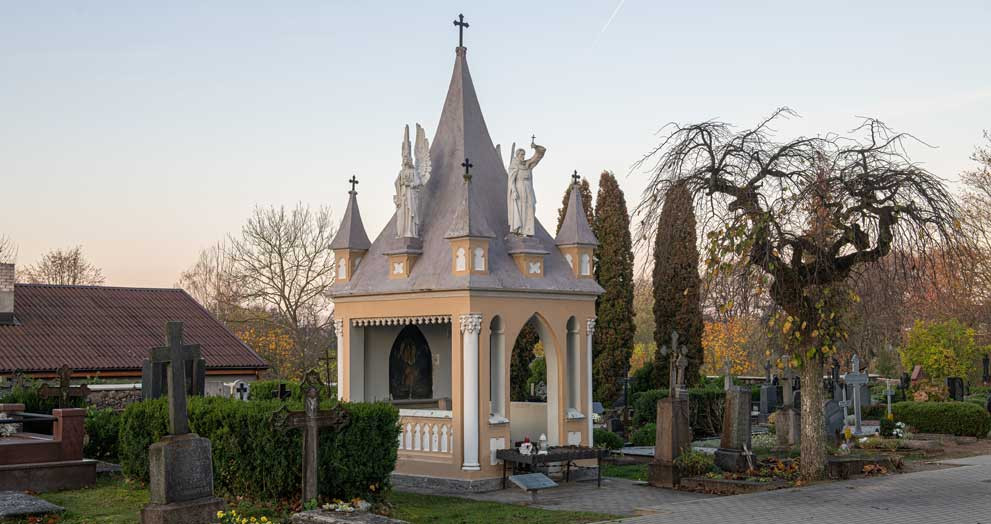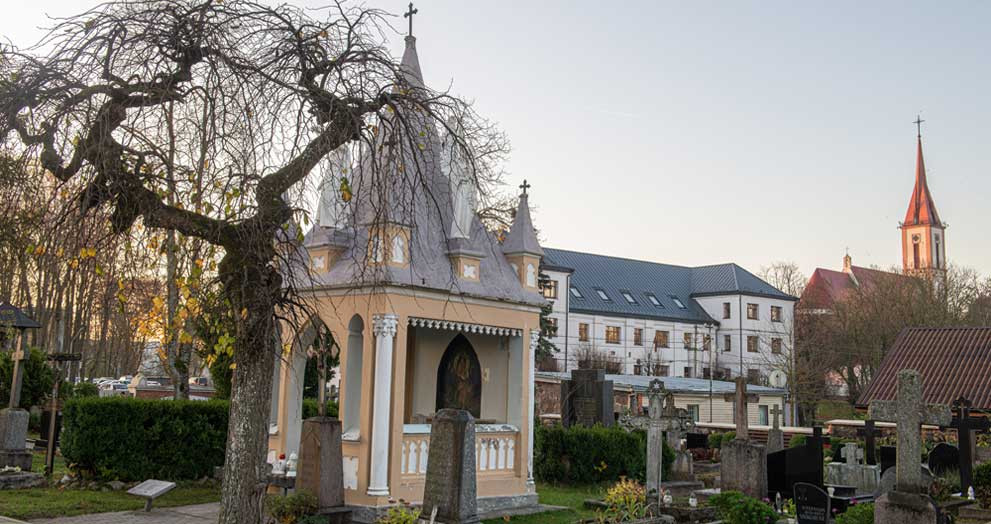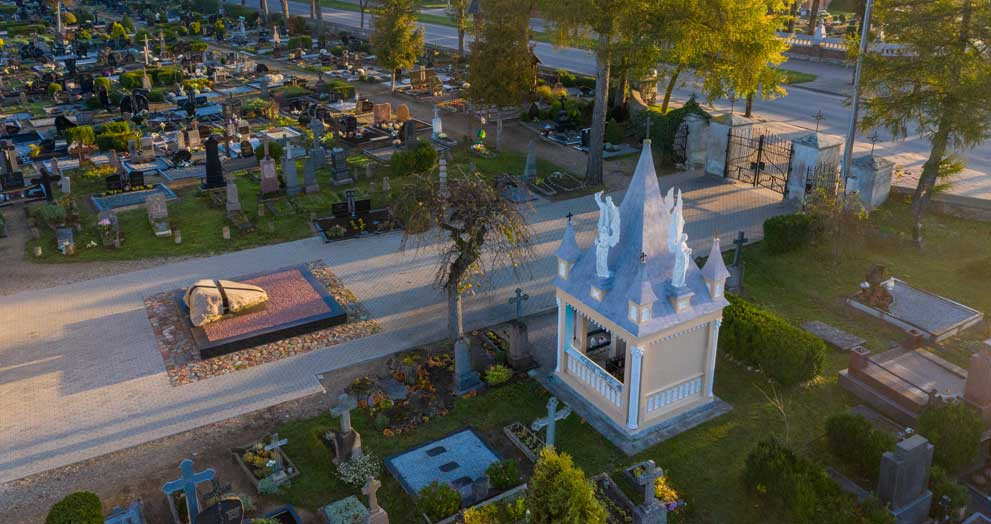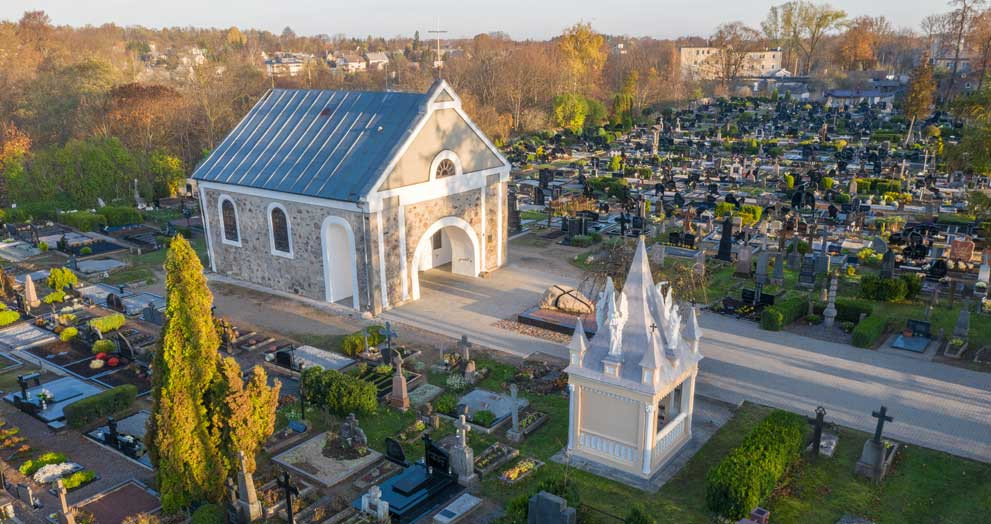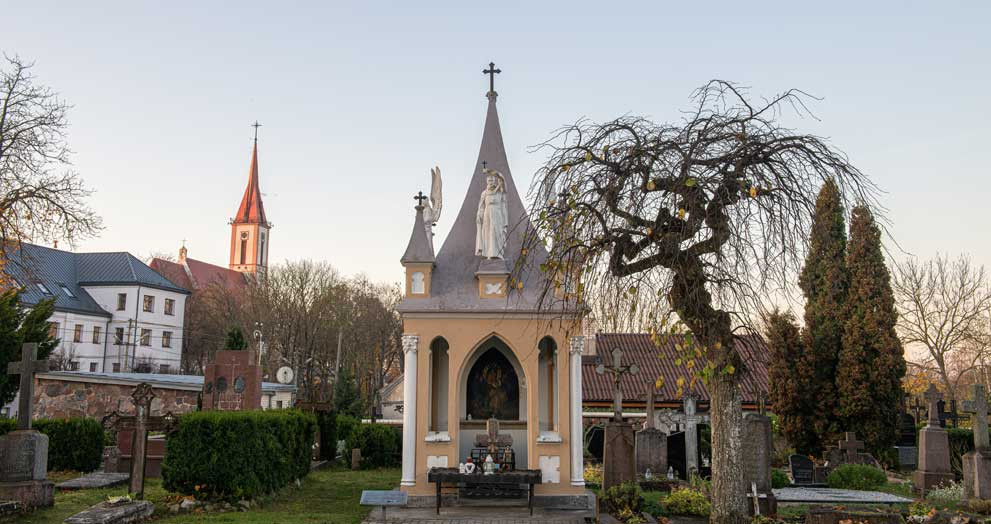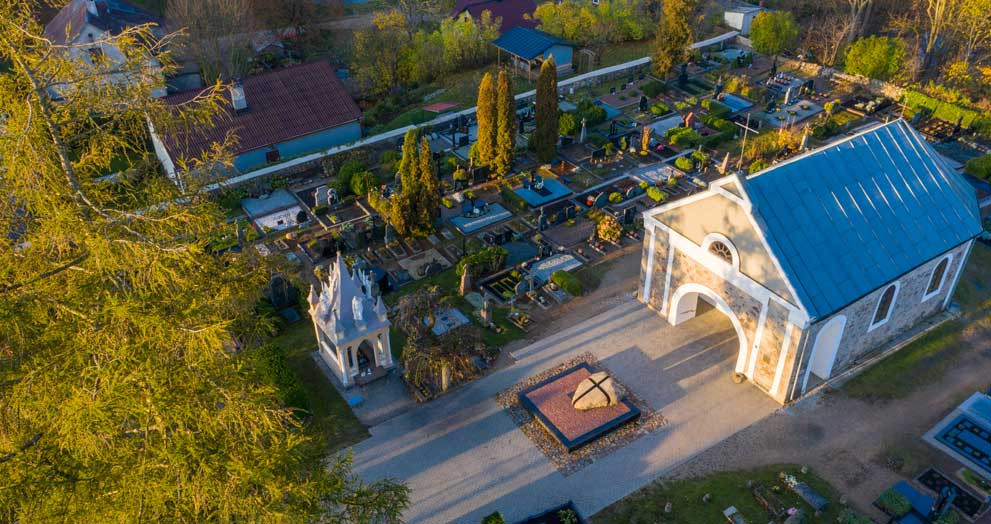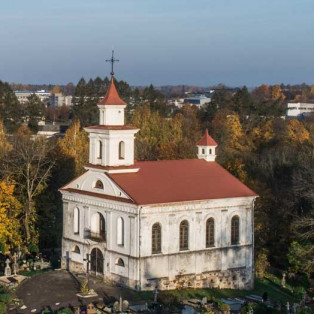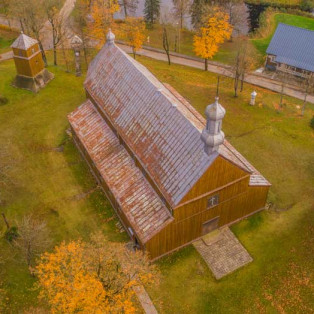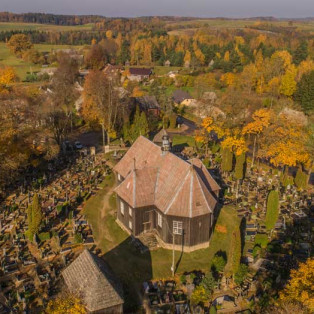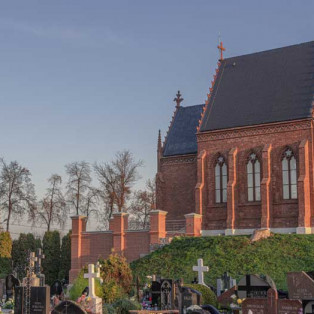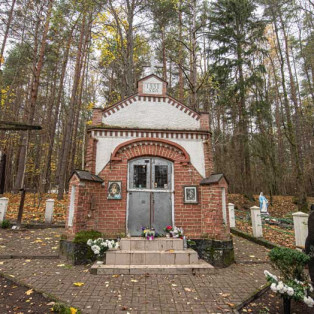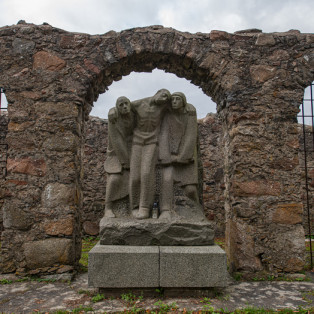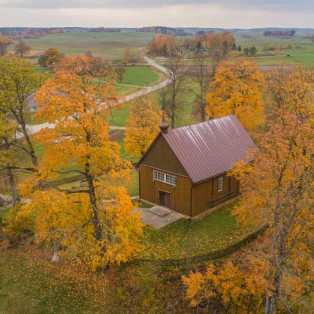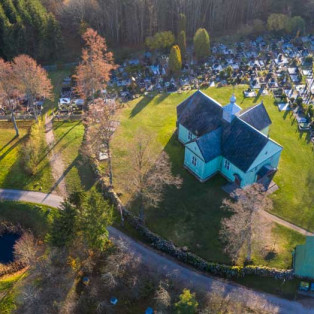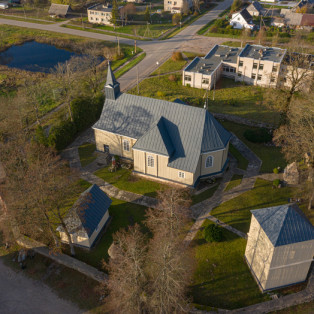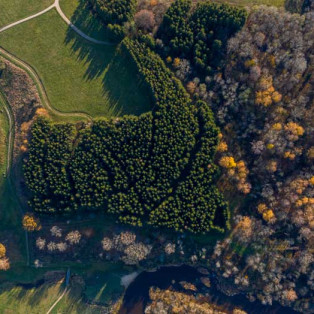In the old graveyard of Kretinga, a Franciscan monk, preacher, botanist and doctor is buried – Jurgis Pabrėža, otherwise known as Father Ambroziejus. This man, who resided in Kretinga in 1771-1849, was well known amongst the residents of the surrounding area. That is why the guardian of the monastery, Augustinas Dirvelė, decided to build a small 15 square metre neo-Gothic style masonry chapel above his grave in 1933.
The shape of the roof is like a pyramid with four slopes, in the corners there are four rectangular pyramidal four-sloped turrets with iron crosses at their tops, while between the turrets four concrete sculptures stand upon rectangular pedestals: St. Francis and the angels. In the interior of the chapel there is a wall painting of “Virgin Mary the Eternal Saviour” by unknown artist, but the residents of Kretinga say that it was painted by Pabrėža himself.
The maintenance and restoration of the chapel was performed by sporadic craftsmen, and the painting within the chapel was painted over multiple times. In 1993, the Jurgis Ambroziejus Pabrėža Grave Chapel was added to the registry of cultural heritage objects.
Many people in Samogitia believe J. Pabrėža to be a saint to this day. It is said that those who visit his grave sometimes experience miracles; thus, the candles in the chapel are kept lit all year round. However, J. Pabrėža is important not just to religious believers – he left behind many significant works in the field of botany including a Latin-Lithuanian botanical dictionary and a plant morphology Lithuanian terminology dictionary, as well as the very first Lithuanian textbook for geography and a geographical terminology dictionary, 17 manuscripts with notes on diseases, their symptoms and their treatment, a medical terminology dictionary, a Latin textbook, and also numerous sermons on questions of faith.
- Audio guide (2.9 MB )



